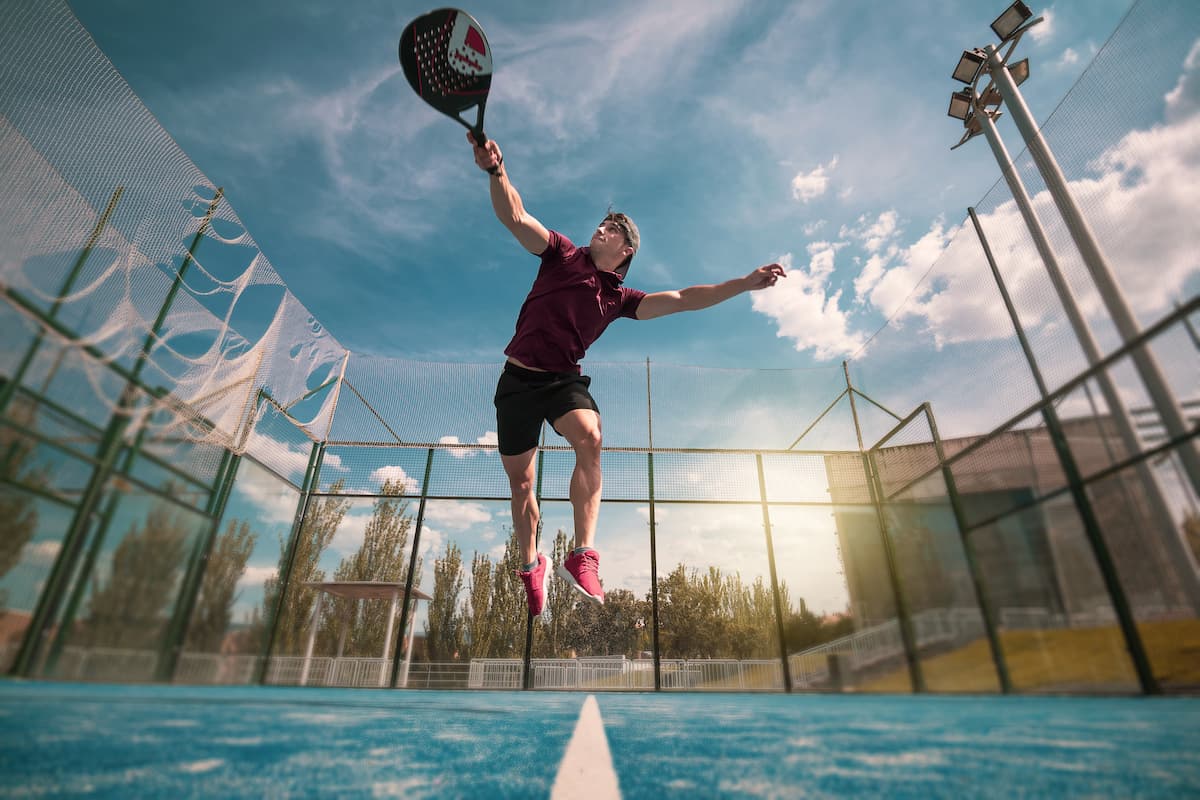Padel has soared to global popularity as a racket sport, combining elements of tennis and squash in a fast-paced, strategic game. Played mainly in doubles on enclosed courts, this sport is celebrated for its social aspect and ease of play.
Understanding the Basics of Padel
Originating from a modified form of tennis to fit smaller spaces, padel merges the dynamics of traditional racket sports with unique twists.
It’s played on a 20m x 10m court, enclosed by walls where balls can be played off, similar to squash.
The Gameplay
In padel, two teams are separated by a net with gameplay following a scoring system akin to tennis but requiring different strategies due to the wall-plays.
Games reach up to six points, with victory requiring a two-point lead. A crucial aspect is the underhand serve, starting each point.
Court Specifications
A striking feature is the padel court itself: larger than a squash court yet smaller than a standard tennis court.
Combined with walls that impact play, these features demand new strategies and skills from players.
Health Benefits and Exercise Intensity
Engaging in padel offers not only plenty of fun but also significant physical health benefits. Individuals might burn up to 700 calories per session depending on the intensity, making it an exceptional cardiovascular exercise.
Focused Physical Benefits
- Intense short rallies provide concentrated exercise.
- Enhances agility, reflexes, and muscle tone.
- Lowers risk of joint injuries through its low impact nature.
Tips for New Players
Newcomers to padel should start by getting familiar with the racket and balls in practice sessions.
Playing involves strategy and control rather than raw power, focusing more on precise footwork and positions.
Read more : Where to play Pickleball in Arizona: top 5 locations for enthusiasts
First Steps on the Court
To fall in love with padel, beginners are encouraged to start hitting balls to understand the unique balance between force used and control over the ball’s bounce while discovering effective movement around the court.
Comparing Padel to Other Racket Sports
While similar to other racket sports, padel stands out due to its distinctive play style and requirements.
Here’s how it differs notably from its cousins like pickleball or traditional tennis:
Key Differences with Pickleball and Tennis
Unlike tennis, which has vast open courts, or pickleball known for its smaller-sized fields without wall interactions, padel uses both the ground and walls, enhancing the complexity and appeal of the game.
Prominent Growth of Padel Worldwide
Since experiencing a surge in popularity around 2018-2019, padel continues to attract millions globally, reaching a staggering thirty million players according to sport executives.
Global Impact and Expansion
With significant infrastructure developments such as clubs like Ultra Club Miami maximizing capacity consistently, padel’s growth trajectory seems poised for further expansion, driven by its accessibility and engaging nature.
In conclusion, padel remains a standout sport growing rapidly worldwide.
It combines ease of learning with physical benefits and social engagement, presenting an attractive package for everyone from beginners to seasoned enthusiasts looking for a dynamic and community-centered sporting experience.







